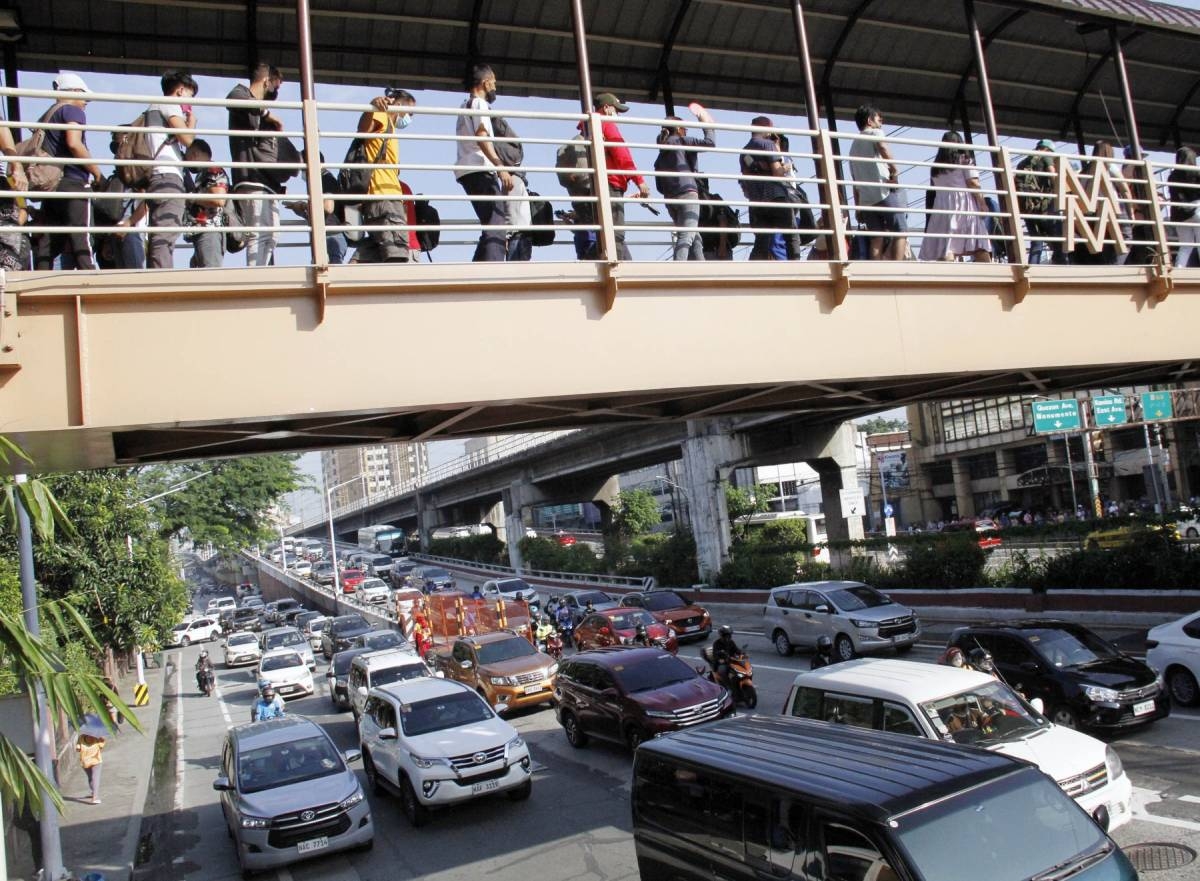TRAFFIC congestion exacts a substantial economic cost on the Philippines, and that problem could weigh down recovery from the pandemic’s impact. This is relevant because as the economy reopens, traffic congestion seems to be making an unwelcome comeback.
In 2018, the cost of traffic congestion in the Philippines was estimated at P3.5 billion per day, according to the Japan International Cooperation Agency. It said the cost was predicted to reach P5.4 billion per day by 2035, unless effective interventions are put in place.

That became less of a concern over the past two years, when the country was locked down to contain the health threat. But with the Philippines reopening, the problem has resurfaced. And the interventions needed remain as urgent as before Covid-19.
The good news is that the Marcos government’s economic agenda includes long-term solutions to this legacy problem. The continuation of the previous administration’s infrastructure development program known as “Build, Build, Build” should help ease traffic congestion once more roads and bridges are built.
That, however, does little to improve the situation now when recovery should be accelerating. Like a speed bump, traffic congestion makes the recovery decelerate instead.
Also, easing traffic congestion addresses other current problems. For one, resolving that could also help manage inflation. Rising costs of fuel, which the Philippines imports, is a major component of inflation, which stands at 7.7 percent.
When there is traffic congestion, fuel consumption increases. The added emissions counteract efforts to combat climate change, a global concern.
Reducing congestion also helps minimize lost labor productivity. When motorists and commuters spend less time on the road, their quality of life should improve.
Given more time and space, one can come up with more reasons why the authorities should act now. The point is that traffic congestion is more than a nuisance.
Traffic management
One intervention than can have immediate results is to improve traffic management by local governments and law enforcers. In this regard, they should revisit the No Contact Apprehension Policy or NCAP that was shelved for legal reasons. That policy was introduced in 2009 by the Metropolitan Manila Development Authority, but some groups filed protests last year before the Supreme Court, which then issued a temporary restraining order. Given the economic ramifications, we hope the justices resolve the case soon.
The court may have the final say on the legal aspects, but from a traffic management standpoint, the NCAP seems promising. In Quezon City, for instance, Mayor Joy Belmonte had said in a statement that the policy reduced traffic violations in some areas by 93 percent. In fact, five Metro Manila mayors said the NCAP helped ease traffic congestion, because it encouraged motorists to comply with traffic regulations.
The mayors also pointed out that the policy reduced corruption. Without direct contact between law enforcers and violators of traffic rules, the opportunity to offer or demand bribes was eliminated.
In another statement, Dindo Manhit of Stratbase-ADRI argued that the flow of traffic will be smoother with the implementation of the NCAP. “The no-contact policy decreases obstructions in traffic flow as there is no need to apprehend or stop vehicles along the road.”
As we said in a previous editorial, the NCAP may be a good idea, but it requires fine-tuning. Its critics complained about paying varying fines charged by the different local governments for similar traffic violations. For instance, one city imposes a P300-penalty for not wearing a helmet while riding a motorcycle, but another local government unit charges P1,500 for the same offense. That should be resolved soon, though.
The Land Transportation Office (LTO) and the Metro Manila Council are keen on implementing a single-trafficking system, probably by early next year. The LTO said it was looking to harmonize the rules and penalties, and that it was not out to increase the fines.
Of course, the Supreme Court has to rule on other legal challenges not mentioned here. But if the NCAP’s flaws can be fixed, the program should contribute to resolving the traffic problem and enable the economy that is back on track to cruise along faster.
